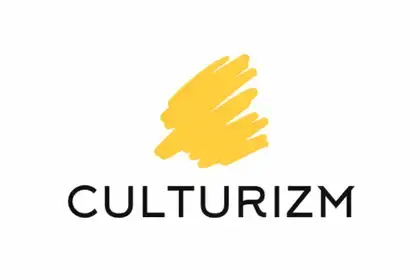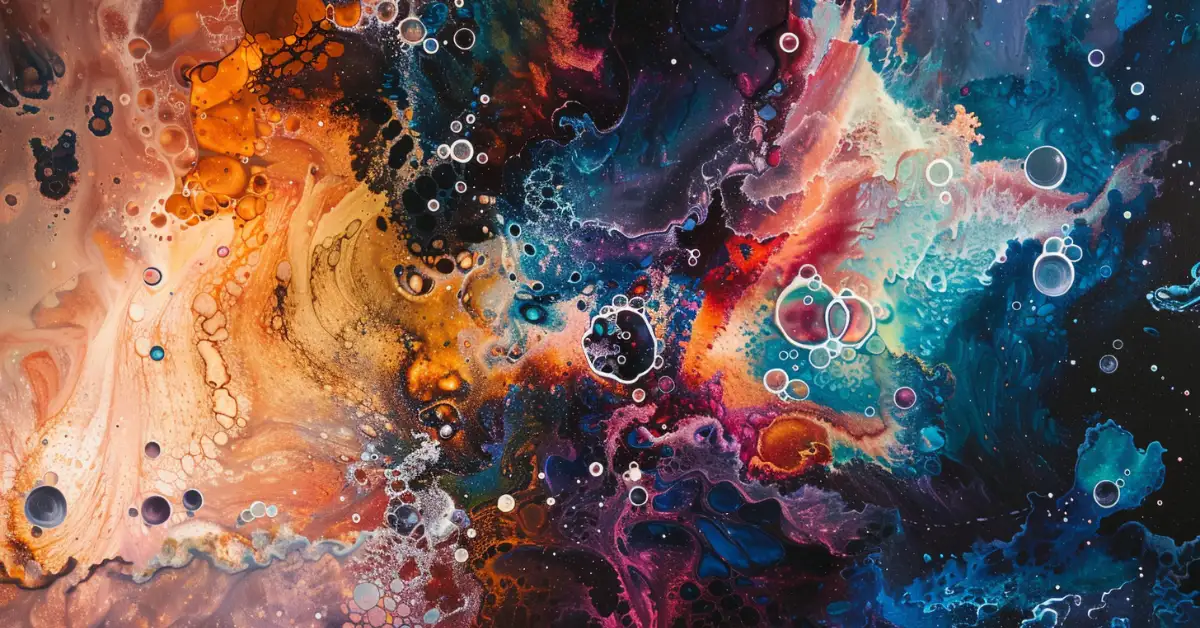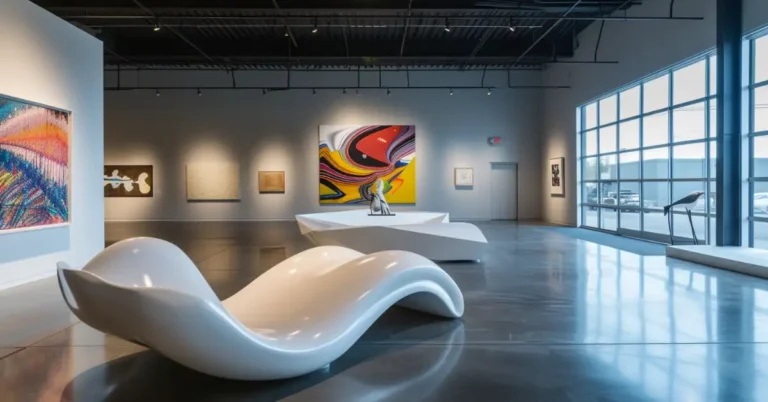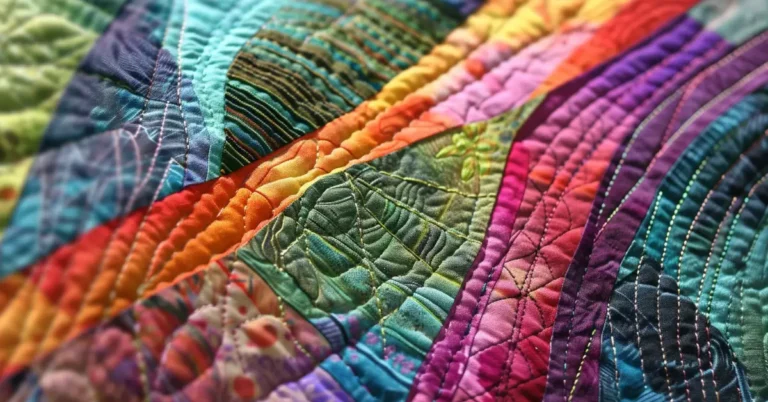Dive into the essence of contemporary abstract art, where emotions and ideas eclipse literal imagery through bold shapes, colors, and textures. This art form invites you to experience and interpret the world beyond the confines of traditional representation. Discover how modern artists are evolving the legacy of icons like Kandinsky and Pollock, using innovative techniques to create works that resonate on a profound level and redefine our visual landscape.
Defining Characteristics of Contemporary Abstract Art
Contemporary abstract art thrives on breaking away from the traditional representation, allowing us freedom through vibrant use of color, engaging textures, and novel shapes.
Color and Texture
Essential Aspects of Color and Texture
| Feature | Description |
|---|---|
| Color | Evokes emotion and sets the mood; can be harmonious or contrasting. |
| Texture | Adds depth and tactile dimension; can be physical (impasto) or visual (sgraffito). |
We see color as the language of emotion in contemporary abstract art. It doesn’t just fill space—it creates it. Whether through subtle hues or bold statements, color shapes our emotional response. Texture complements color, giving the art piece a sense of mystery and tactile allure. It’s not just about seeing but feeling the art.

Form and Geometry
Essential Aspects of Form and Geometry
| Feature | Description |
|---|---|
| Form | Encompasses the 3D aspects of art; utilizes shape and space. |
| Geometry | Employs geometric shapes and structures as the basis of the composition. |
Geometry provides order within the chaos, while the form is the architecture of our pieces. Abstract art isn’t constrained by reality. It lets forms bend space, and geometry guides us along a less-trodden path. Both invite us to move beyond the canvas into a realm of possibility and exploration.

Line and Design
Essential Aspects of Line and Design
| Feature | Description |
|---|---|
| Line | Defines boundaries, directs the eye, and outlines shapes. |
| Design | Encompasses the overarching arrangement of lines, colors, and forms. |
Lines are the threads that stitch our work together, offering structure in a fluid world. They can create movement or establish harmony. In design, we find the conscious arrangement of all these elements to create a cohesive whole that is both thought-provoking and aesthetically pleasing.

Themes and Symbolism of Contemporary Abstract Art
In exploring contemporary abstract art, we uncover how artists use shapes, colors, and conceptual frameworks to represent complex ideas and emotions.
Abstraction vs. Figuration
Contemporary abstract art is a field that often blurs the lines between the abstract and representational. While figuration focuses on realistic depictions, abstraction frees artists from literal representation. This allows us, as viewers, to interpret an artwork’s meaning in a more personal way. Abstraction emphasizes elements like shape and color, inviting us to find our own stories and meanings in the visual language presented before us.

Representation of Complex Ideas
The crux of contemporary abstract art lies in its ability to convey complex ideas through visual means. Artists might use a vibrant palette to evoke powerful emotions or muted tones to suggest subtler narratives. The use of language in art, be it through the title or integrated text, often adds layers of meaning, aiding in storytelling without a traditional narrative structure. Through abstraction, even a single brushstroke might represent a multifaceted concept or convey a deep philosophical statement, challenging our perceptions and encouraging introspection.
My Favorite Contemporary Abstract Artists

Contemporary abstract art offers an expansive landscape of creativity where every artist brings a unique voice and vision. In our exploration of this vibrant scene, we’ve encountered several abstract artists who stand out for their innovative techniques and compelling narratives.
Ana Dévora
Ana Dévora’s work is a testament to the power of texture and color. Her canvases are layered with rich, tactile elements that invite viewers to contemplate the surface’s every detail. The interplay of abstract forms and colors in Dévora’s pieces offers a window into her emotive and intricate creative process.

Jadé Fadojutimi
The dynamic compositions of Jadé Fadojutimi are characterized by their energetic brushstrokes and youthful color palette. Fadojutimi’s approach to abstraction is both personal and expressive, with each canvas presenting a lively visual narrative.

Jeffrey Tover
With a focus on the spontaneous and intuitive aspects of painting, Jeffrey Tover’s work captures the essence of abstraction. His pieces reflect balanced chaos, where vibrant colors and bold forms coalesce into harmonious compositions that stimulate the imagination.

Arielle Austin
Arielle Austin draws us into an intimate dance of form and color. Her abstract works are grounded in emotion and spirituality, resulting in paintings that resonate with depth and sincerity. Austin’s use of subtle color gradients and organic shapes creates a sense of serenity and introspection.

Ruairiadh O’Connell
The work of Ruairiadh O’Connell frequently engages with the themes of memory and perception. His unique approach to pattern and repetition often incorporates materials and techniques that challenge traditional notions of abstract painting, making his work a thought-provoking contribution to the field.

The Creative Process
When we explore contemporary abstract art, we’re delving into a realm where the creative process varies as widely as the artists themselves. Each artist approaches their craft with a unique set of techniques and materials, and with the advent of digital technology, the possibilities have only expanded.
Techniques and Materials
- Abstract Painters: They often favor bold, expressive brushstrokes or delicate layers of color. The choice of paint—be it oil, acrylic, or watercolor—is crucial, as it influences the texture and drying time of the work.
- Sculpture: Abstract sculptures may use materials ranging from traditional bronze and clay to unconventional items like found objects, shaping them to create a new visual vocabulary.
- Drawing and Prints: Pencil and ink are standard tools for many artists. In prints, techniques such as lithography or etching allow for repetition with variation, as each print can have unique qualities.

Abstract Art and Digital Technology
- Digital Elements: The integration of digital elements into abstract art has opened up new avenues for creation and manipulation. Artists might digitally alter traditional media or construct pieces entirely from digital tools, blurring the lines between the physical and virtual realms.
- Tools: Software like Adobe Photoshop or Illustrator becomes the canvas and palette, and devices like graphics tablets allow artists to draw with precision directly onto a digital surface.

The Evolution of Abstract Art
As we delve into the rich tapestry of contemporary abstract art, it’s essential to recognize the transformative journey from early pioneers to modern-day expressions. This story is not just about aesthetics; it’s about significant artistic revolutions that have defined our cultural landscape.
Early Pioneers and Influences
The inception of abstract art marked a monumental shift in the way we perceive visual language. Artists like Hilma af Klint challenged the norm with their avant-garde compositions, which often went unnoticed during their time but are now celebrated for their groundbreaking contributions. For example, af Klint’s works, which predate those of more commonly known figures like Kandinsky, embrace a spiritual and organic form of abstraction.
Moving forward, the wave of modern art in the early 20th century brought forward names like Joan Miró, whose dream-like canvases and biomorphic shapes offered a new freedom in artistic expression. And let’s not forget the influence of American painter Georgia O’Keeffe, whose close-up flower portraits evolved into large-scale abstract paintings, zooming into the essence of her subjects to reveal an inner landscape beyond their physical form.

Abstract Art in the Contemporary Era
In the contemporary era, abstract art continues to evolve, incorporating dynamic processes and diverse perspectives. The action-packed drip paintings of Jackson Pollock fully embodied the spirit of post-war America, with their raw energy and spontaneity sparking conversations about the nature of art and authorship.
Today’s abstract artists build on this rich heritage, often leveraging new mediums and technology to explore abstraction. In our interconnected world, contemporary abstract art is not only a reflection of individualism but also a collective dialogue that challenges, inspires, and reshapes our understanding of art and society.

Impact and Reception of Contemporary Abstract Art
Contemporary abstract art continues to shape the cultural landscape with its innovative styles and its influence on the art market.
Artistic Influence and Relationships
- Sam Gilliam: As a pioneering figure, his draped, painted canvases expanded the possibilities of abstract art.
- Inter-artist relationships: Collaborations and shared ideas among contemporary artists propel the genre forward, leading to new movements and approaches.
Contemporary Abstract Art in the Market
- Auction presence: Abstract artworks frequently perform well at auctions, signaling strong market reception.
- Investment: Collectors often view contemporary abstract art as a valuable investment, fostering a demand that drives up prices.
FAQ – Contemporary Abstract Art
What is contemporary abstract art?
Contemporary abstract art is a genre that emphasizes non-objective, non-representational forms to evoke emotions, using shapes, colors, and gestural marks.
What is abstract expressionism in contemporary art?
Abstract Expressionism in contemporary art is a movement marked by spontaneous, abstract forms and an emphasis on the expressive potential of the medium, aiming to convey emotions and concepts through non-representational imagery.
Is abstract art modernism?
Yes, abstract art is a central stream of modernism, which is a broad movement in Western art that includes various abstract styles developed since the early 1900s.
Is Abstract Expressionism modern or contemporary art?
Abstract Expressionism is considered a part of modern art, emerging in the 1940s and 1950s, and was the first movement to position New York City at the forefront of international modern art.
If you enjoyed our blog post on “Contemporary Abstract Art,” we’d love to hear from you! Please drop a comment below to share your thoughts and experiences with us.
If you want to keep reading more from us, have a look at these articles.






